WARSAW - It’s a bright July morning, and we’re picking out a crate of plump raspberries at Hale Mirowskie market when one of the vendors, a wiry woman with a grey-blond ponytail, leans over and abruptly asks, “What are you doing here?”
“It’s amazing,” we reply.
Our interrogator smiles, but raises her eyebrows skeptically. “Honestly!” I insist.
All summer, we find ourselves repeating this exchange, convincing oddly reticent locals their city is worth visiting. It’s so green and so pretty, we tell them. We can’t get enough of the chilled-out lifestyle. The city bikes. The amazing restaurants. The tiny alfresco cafés on every sliver of grass. Łazienki Park, with its baroque palace and open-air Chopin concerts.
The truth is, when the opportunity to go to Warsaw presented itself via my partner’s job, we had little notion of what to expect. But hey, we thought, at least we’ll be close to the rest of Europe. And if all else fails, there’d be pierogis, right?
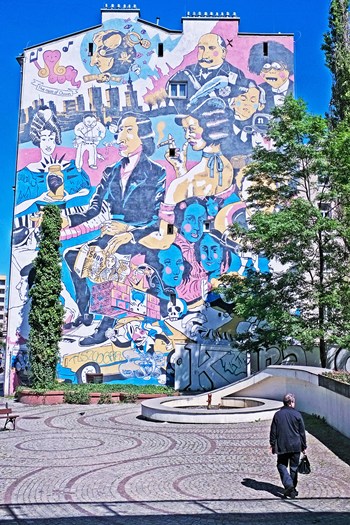
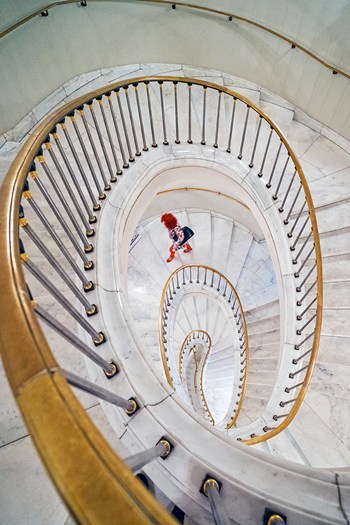
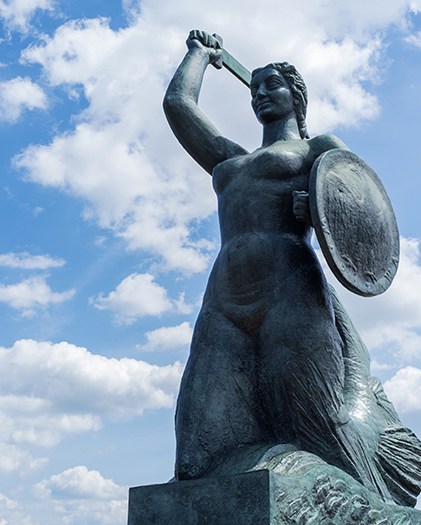
Above: Art is everywhere in Warsaw - on buildings, in staircases and in public squares.
Happily, we discover much more. On one of our first days in the city — a sunny June afternoon — we’re strolling along the Vistula River with Maja, our hip, perfectly manicured property agent. She has just shown us a few condos nearby. Cyclists and rollerbladers blitz past as we wander south toward a grassy area, where couples and young families are kicking back in canvas folding chairs and hammocks.
We pause to photograph a bronze statue of a mermaid brandishing a sword. She faces north, along the bank of the lazy flowing river. The mermaid, Maja tells us, has been the symbolic protector of Warsaw since medieval days. There are similar likenesses throughout the city.
Farther along, popup bars built out of brightly painted shipping containers line the path. We decide to make a stop at one where the bartenders are pouring Żywiec, a local lager, for a clutch of local twentysomethings in sunglasses and fashionably slouchy tops. Beer is ridiculously cheap here – usually just a few złoty — a couple of bucks — for a pint. We ask Maja what to order and she suggests Polish apple cider. It’s lightly fizzy and pleasantly tart.
As we climb a rickety staircase to the balcony, she tells us that in 2014, Russia banned fruit imports from the European Union because of the West’s Ukraine-related sanctions. A local social media campaign quickly took off, entreating Poles to eat apples and drink cider “to annoy Putin,” and help consume a nationwide surplus. As we’re only too happy to help the cause, we clink bottles and sip away the afternoon.
A few weeks later, we’re walking down Lipowa Street, in the Powiśle neighbourhood, not far from the river. Until 10 years ago, this was a no-go zone, populated by rundown, Soviet-era tenement houses and empty factories. Today it’s packed with chic restaurants, wine bars, bike shops, mod furniture studios and shops selling locally made clothing and leather goods. The University of Warsaw library – with its patina-green facade and rooftop botanical garden – draws visitors and students alike.
We duck into Sam, a restaurant/bakery where academics and young Varsovians hang out sipping smoothies, tapping away on laptops and scarfing back Israeli-influenced fare. We order omelets with Americanos and settle in as our server, wearing thick-rimmed glasses, flits from table to table.
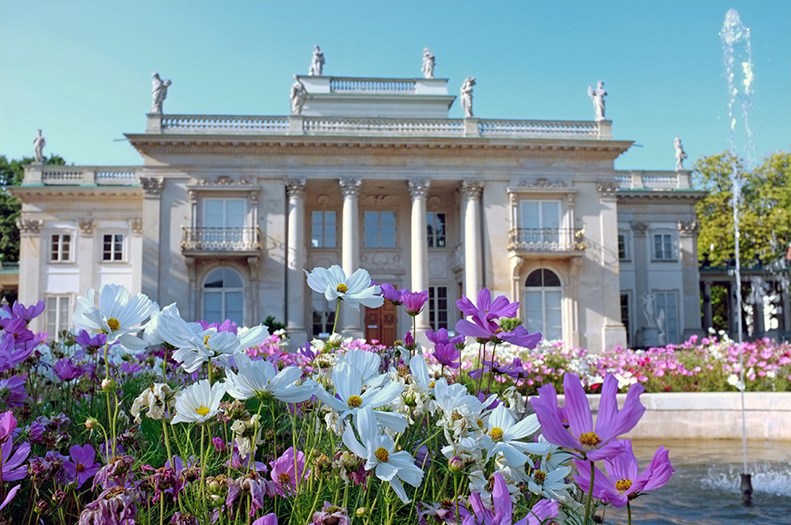
Above: Łazienki Palace, located in a park of the same name, dates back to 1674.
Before leaving, we pop downstairs to buy some still-warm, thick-crusted Polish bread and handmade chocolate truffles. “Dziękuję bardzo!” (thank you very much) I chirp at the cashier, who looks startled, and then mildly amused.
Most North American tourists, if they visit Poland at all, skip Warsaw and drop straight into Krakow, 300 kilometres to the south, preferring to see a city whose cultural sites were relatively unscathed by World War II. This phenomenon irks Varsovians, who find their city being compared unfavourably to Krakow all too often. The (mostly) friendly rivalry goes back further than the 20th century, however.
“We took all of their pretty things away,” jokes Jacek, our guide on a damp Old Town walking tour.
He’s talking about the relocation of Poland’s capital city, royal court and all, from Krakow to Warsaw in 1596.
We huddle under umbrellas and follow him along wet cobblestones, from the onion-turreted, salmon-coloured Royal Castle, past the circa-1390 cathedral and into Old Town Square, with its open-air restaurants and brightly painted facades. Passing through the medieval barbican, or city gate, and heading down Freta Street, we catch a glimpse of the house where double Nobel Prize-winning physicist Marie Curie (née Maria Skłodowska) was born in 1867.
You’d never know this part of town was destroyed in WWII. It was painstakingly recreated in the ensuing decades, based on old drawings, paintings and photos. The historic centre of Warsaw is a UNESCO World Heritage Site for this very reason.
A Cold War-era landmark looms largest on the city’s skyline — the Palace of Culture and Science — smack in the middle of downtown.
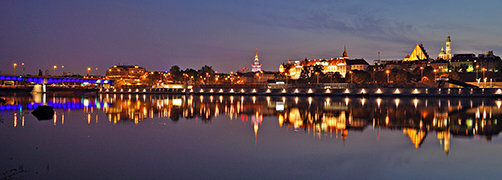
Above: The lights of Warsaw’s Old Town shine brilliantly across the Vistula River.
Designed by Soviet architect Lev Rudnev, the palace was Joseph Stalin’s unwelcome gift to the city, a literal ivory tower (since turned brown), completed in 1955 for a king’s ransom at a time when the city was in ruins.
Today, despite lingering resentment, the 231-metre-tall edifice (the tallest in Poland) has become a thriving community hub. It houses multiple theatres and museums, plus cinemas, libraries, cafés and restaurants – even a swimming pool. Some of the old communist haunts have been preserved, however. One afternoon in late summer, we drag some Canadian guests along to take a guided tour of the building.
To our surprise, we arrive to discover a food truck festival in full swing out front. Hundreds of people are milling about, crowding long wooden tables and queuing up at dozens of colourful trucks for treats like waffles, Belgian frites and gourmet hamburgers – the latest culinary craze to grip the city.
But we steel our stomachs and marshal up inside for the tour, excited to glimpse a few of the palace’s 3,200-plus rooms: massive ballrooms with enormous handmade chandeliers, state rooms with curved wooden tables, the antechamber where Nikita Khrushchev once took a vodka-induced nap. Then we squeeze into an elevator operated by a dour attendant on a stool and whip up to the 30th floor for a panoramic view of the city. Glass skyscrapers sparkle to the west and the long shadow of the tower stretches east, down Złota Street, between boxy commercial buildings.
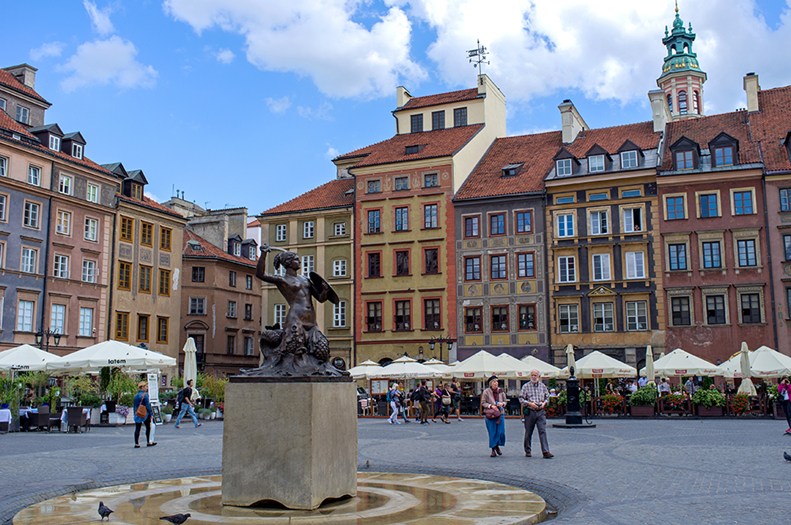
Above: The historic Old Town of Warsaw is a delight.
Back at ground level, the food trucks are still there, so I order vegetarian tacos while my companions go for zapiekanka, a Polish street food that looks and tastes like a pizza baguette. For dessert, we find a kiosk selling gelato on the palace steps. The round-cheeked young woman at the counter loads up our cones with stracciatella (gelato with chocolate shavings), and asks, in perfect English, where we’re from.
We’re visiting from Canada, we say, gearing up to give our usual reasons. But, as the sun sets in a radiant pink haze, and laughter echoes across the plaza, she just smiles and nods. There’s no need to ask.